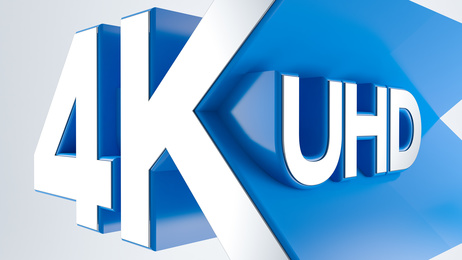4K: “Good Enough” Isn’t Good Enough

As the rollout of 4K continues, the usual crowd of experts has come out of the woods to talk about “4K certification programs” and how a given interface is “plenty fast enough” for 4K. Not surprisingly, most of those discussions revolve around the HDMI interface; specifically version 2.0, which was announced a year ago and has been implemented on a very limited basis to date.
Very few of these blogs that I’ve read appreciate the big picture (no pun intended!) when it comes to 4K. In fact, 4K has many different flavors: Are we talking about the Ultra HD standard (3840×2160 pixels)? Or are we talking about “cinema” 4K (4096×2160 pixels)? Or, are we actually referring to a wide range of pixel resolutions and image refresh rates, as enumerated in SMPTE standards for UHD-1 and UHD-2?
Are these “experts” considering the impact of high dynamic range (HDR) and high frame rate (HFR) video on 4K? Are they considering the enormous palette of colors that is contained in the new ITU BT.2020 color space? And are any of them listening to the growing chorus of voices in the film and video production industries who are calling to move beyond YUV color and finally realize the dream of a full RGB color television system?
Not surprisingly, many of the blogs and marketing materials seem to be self-serving: They are either dressing up the status quo as far as their existing HDMI signal interfacing or distribution product lines are concerned – much of which still supports only version 1.4 – or they are trying to rationalize why the speed limitations of HDMI 2.0 aren’t really an issue because “everything will be delivered in the 4:2:0 color space” or “most people will be watching video with slower frame rates at home.” Wrong!
It’s never a good idea to design a signal interfacing and distribution system to fit the lowest common denominator. We put up with interlaced video for years as a way to compress a signal to fit a 6 MHz channel. Today? Aside from legacy TV broadcasts and cable, it’s fast becoming a museum artifact.
The same holds true for 8-bit color. To realize all of the quantum improvements that come hand-in-hand with 4K, 8-bit color sampling and rendering must fall by the wayside in favor of 10-bit and even 12-bit rendering.
I suspect the real motivation for all of this rationalization about the limitations of HDMI is the recent announcement of DisplayPort 1.3 last month. Version 1.3 blows way past HDMI 2.0 in bus speed and clock rates (32 Gb/s maximum) and will employ light compression for the first time in any display interface.
Since DP is a purely digital interface, it’s easy to mix different signal formats in its physical and media layers. Most importantly, there is no royalty associated with using this interface. The 40+ member companies of VESA have decided for the time being to promote a wider use of DisplayPort, which was designed to go WAY beyond 4K to 8K while covering everything in between.
The next time you hear or read that everything is “hunky-dory” with transporting 4K signals through HDMI 1.4 or 2.0, challenge that assertion. It does our industry no good to be complacent at a time when the very concept of “television” is being redefined from top to bottom. Our interfaces will need to get a LOT faster to handle 4K+ signals, meaning “good enough” is simply not good enough.
Article written by Tom Kopin – CTS, ISF-C

